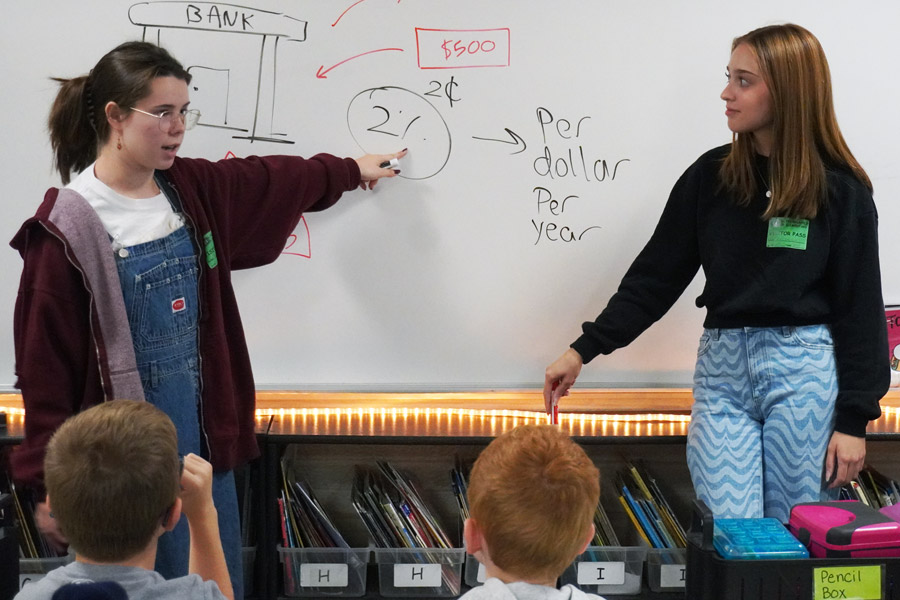Forest Hills — As economic transactions become more and more electronic, Northern High senior Nora Ingram said she can see why understanding money and how to use it is becoming increasingly important.
“Being exposed to what a bank is and interest is important, especially as you get older so you know how to handle your money,” Nora said.
She and classmate Meredith Neumaier were visiting Dawn Neumaier’s second-grade class at Thornapple Elementary to talk to the students about saving, spending, borrowing, and lending as part of a teen teach-in organized by the national Jump$tart for Personal Finance Literacy program. The nonprofit focused on youth financial literacy hosts the annual teach-in, which this year included high-school students from 33 states teaching financial literacy to elementary students.
Northern teacher Brian Johnson, who teaches the personal finance class that Nora and Meredith are taking, became involved in Jump$tart in 2016 and has been attending the organization’s national conference ever since.
An advocate of financial education, Johnson said his students were instrumental in helping to pass House Bill 5190, which requires all Michigan high-school students to take a semester of financial literacy.
“I believe that by having my students take part in the Jump$tart Teen Teach-In, we are continuing that advocacy into the younger grades,” he said.

Purchasing Power
Meredith said Johnson approached her about teaching the lesson to her mother’s second-grade class, and she recruited Nora to help.
The two started the hour-long lesson by first reading the children’s book, “If You Made a Million” by David M. Schwartz. As Meredith read the book, Nora pointed out to students what they could buy with a penny, such as penny candy, or with a dollar, such as four rubber balls.
After the story, students talked about what they could purchase with a dollar, where they keep their money — which most said are small personal banks — and where most parents kept their money.
“So if you want to purchase something that is $10 but you only have $5, what would you do?” Nora asked the class.
“You would make a down payment,” said second-grader Adler Theobald.
“Right, and then you would have to either borrow or work to earn the rest of the money,” Nora said.
The Importance of Learning the Basics
The teens also presented a short skit to demonstrate how a person who puts money in a bank makes money by earning interest, and how a person who borrows money pays interest.
“I was nervous about presenting this, because these are not easy concepts to understand,” Meredith said. “But the students were quick at picking it up.”
Second-grader Parker Walton noted that if a person was making $1,000 a week in interest on a million dollars at the bank that that person would make $52,000 in a year.
During a discussion on why a bank charges more interest to loan money than the interest received on money that is placed in a savings account, second-grader Oliver Beckering said it was so the bank could make money.
“The one thing I learned from this is that you can take a difficult concept and if you simplify it enough, (kids) can understand it,” Nora said.

Read more from Forest Hills:
• Getting the bands back together
• Environmental educator receives fellowship













